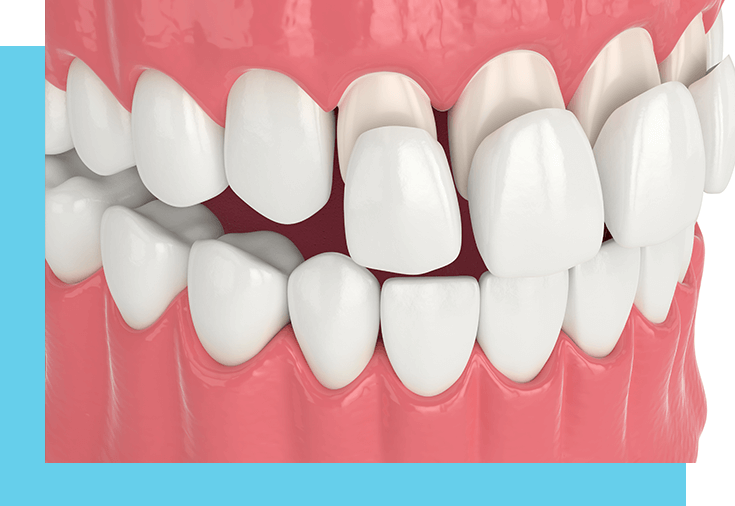Dental Bonding vs. Veneers
Dental bonding and veneers are popular cosmetic dentistry
options for fixing dental imperfections and enhancing smiles. Dental bonding and
veneers offer attractive cosmetic solutions for chipped, cracked, discolored and misaligned
teeth.
Both dental bonding and veneers address similar dental imperfections, and each has specific
benefits, procedures and costs. Understanding the differences between dental bonding and
veneers is essential to find which suits your needs best.
What is Dental Bonding?
Dental bonding, also known as composite bonding or cosmetic
bonding, is a dental procedure where tooth-colored resin material is applied to the surface
of a tooth and then bonded or "cured" with a special light. The process is simple
and in many cases only takes one visit to the dentist's office. Dental bonding works well
for fixing small chips, cracks, or gaps in teeth, as well as hiding discoloration and enhancing
the shape and overall appearance of your teeth.
The composite resin used in dental bonding is carefully matched to the color of your natural
teeth, providing a seamless blend with the rest of your smile. Dental bonding is a non-invasive
and cost-effective procedure compared to veneers, making bonding a common choice for minor
cosmetic improvements at a lower cost.
Advantages and Disadvantages of Teeth Bonding
Like any dental procedure, dental bonding comes with its own set of pros and cons:
Advantages of Teeth Bonding
- Quick and straightforward procedure
- No tooth enamel removal
- Affordable cosmetic solution
- Can be completed in a single visit
- Easily repairable if damaged
Disadvantages of Teeth Bonding
- Less durable compared to veneers
- Prone to staining and chipping over time
- Not suitable for major cosmetic changes
- Will require periodic touch-ups and earlier replacements than porcelain veneers
What are Veneers?
Dental veneers, often referred to as porcelain veneers or dental
porcelain laminates, are thin, custom-made shells that cover the front surface of teeth to
create a brighter smile. Veneers can be made of either porcelain or composite resin
materials, but porcelain veneers are more popular thanks to their natural look, longer
lifespan and resistance to staining.
Veneers are a long-lasting solution for people with severe tooth discoloration, teeth of
disproportionate lengths and widths, noticeable gaps and slightly crooked teeth. Veneers
offer a transformative result, providing patients with an attractive, uniform, symmetrical
smile.
Advantages and Disadvantages of Veneers
Veneers offer a more comprehensive solution to cosmetic improvements.
Advantages of Veneers
- Excellent durability and longevity
- Natural and aesthetically pleasing appearance
- Resistant to stains and discoloration
- Address multiple cosmetic issues at once
- Minimal maintenance required
Disadvantages of Veneers
- More expensive than dental bonding
- Irreversible process due to enamel removal required for application
- May require multiple visits for preparation and placement
- Potentially higher cost for repair or replacement if damaged


